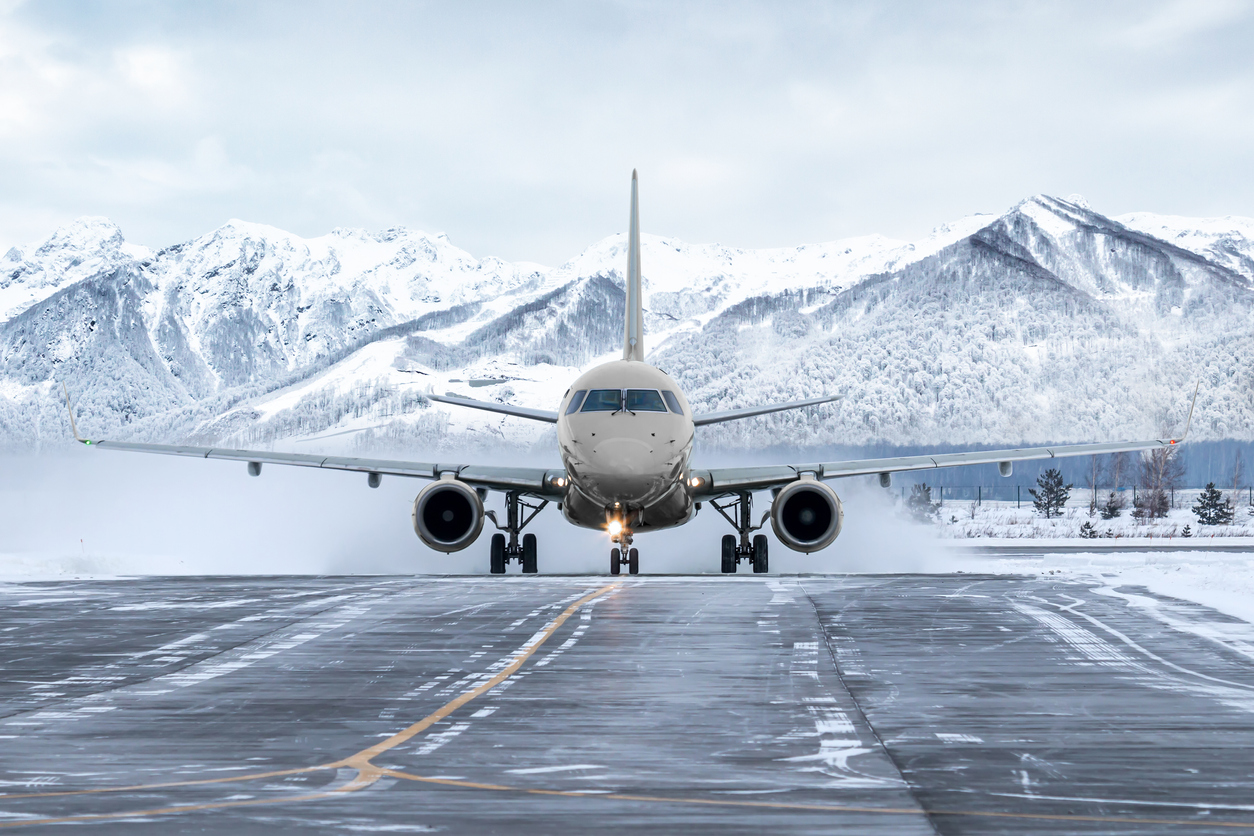Winter Flying Facts That You Need to Know
Flying in the winter months brings unique challenges and considerations, but it also offers opportunities for smoother skies and stunning aerial views. For aviation professionals, frequent travelers, or even those who fly only occasionally, understanding the dynamics of winter aviation can make a significant difference. 
This article explores critical aspects of winter flying, helping you navigate the season with confidence and insight.
The Science Behind Winter Weather and Flight
Cold weather profoundly impacts the physics of flight, altering aircraft performance and influencing weather patterns. Here's what you need to know:
Improved Engine Efficiency
Aircraft engines perform better in colder air due to increased air density. This means engines can generate more power with less effort, enhancing overall performance during takeoff and climb.
Icing Hazards
Ice formation is one of the most significant threats during winter flights. Aircraft can accumulate ice on wings, propellers, and fuselage, disrupting airflow and increasing drag. Pilots rely on anti-icing systems and de-icing procedures to mitigate this danger.
Weather Volatility
Winter often brings unstable atmospheric conditions, including snowstorms, freezing rain, and low visibility. These factors necessitate careful flight planning and reliance on advanced meteorological tools.
Understanding these fundamental effects helps pilots and passengers alike prepare for the unique challenges of winter flying.
How Airlines Prepare for Winter Conditions
Airlines invest heavily in mitigating winter's effects on flight safety and efficiency. Behind every successful winter flight is a well-coordinated effort.
De-Icing Procedures
Before takeoff, de-icing fluid is applied to aircraft to prevent ice accumulation. This process involves specialized equipment and trained ground crews who work swiftly to avoid delays.
Runway Maintenance
Airports implement robust snow removal systems to keep runways clear. Heated surfaces and chemical treatments ensure safe landings and departures, even in heavy snowfall.
Pilot Training
Pilots undergo rigorous training for winter-specific scenarios, including handling icy runways, managing turbulence, and executing emergency procedures during snowstorms.
Advanced Weather Monitoring
Airlines use state-of-the-art meteorological technology to forecast and adapt to weather changes. This ensures minimal disruption and helps reroute flights around severe conditions.
These measures underscore the aviation industry’s commitment to maintaining safety and reliability during winter months.
Tips for Passengers Traveling in Winter
Winter travel comes with its own set of challenges, but a bit of preparation can make your journey smoother and more enjoyable.
Plan for Delays
Winter weather often disrupts flight schedules. Arrive early at the airport, and consider booking connecting flights with longer layovers to minimize stress.
Pack Smart
- Keep essentials like medications, chargers, and a change of clothes in your carry-on in case of delays.
- Dress in layers to stay comfortable as temperatures vary between terminals, aircraft, and destinations.
Stay Informed
- Sign up for real-time flight alerts through your airline’s app or third-party services. Staying updated helps you adapt quickly to changing circumstances.
Hydrate and Stay Healthy
- Aircraft cabins tend to be dry, and winter travel increases susceptibility to colds. Drink plenty of water and use hand sanitizer frequently.
With a proactive approach, passengers can mitigate the inconveniences of winter travel and ensure a more pleasant experience.
The Beauty and Opportunities of Winter Flying
Despite the challenges, winter flying offers unique advantages and experiences that travelers shouldn’t overlook.
Smoother Flights
Cold air reduces the likelihood of turbulence, especially at cruising altitudes, making for a more comfortable ride.
Scenic Views
Winter landscapes offer breathtaking views from above, whether it’s snow-capped mountains, frozen rivers, or glittering cityscapes.
Lower Airfare
For those willing to brave the cold, winter often brings reduced ticket prices, particularly after the holiday season. Flexible travelers can take advantage of these discounts to explore new destinations.
Specialized Destinations
Winter opens opportunities to visit seasonal destinations such as ski resorts, northern lights viewing spots, and festive holiday markets.
By embracing the unique aspects of winter aviation, travelers can turn the season into an unforgettable adventure.
Conclusion
Winter flying presents a mix of challenges and rewards, from managing icy conditions to enjoying the calm of colder skies. Whether you're a passenger or a professional in the aviation industry, understanding these dynamics ensures safety and maximizes the benefits of winter travel. With the right preparation, you can navigate winter air travel confidently and even discover its hidden joys.
References
- Federal Aviation Administration: Cold Weather Operations
- NASA Aeronautics Research: Winter Aviation Safety
- International Civil Aviation Organization: Weather and Flight Safety
- Skybrary: Aircraft Icing
- National Weather Service: Aviation Weather Center
- Airbus: Cold Weather Operations
- Flight Safety Foundation: Winter Flying Tips
- National Transportation Safety Board: Winter Travel Guidelines
- Boeing: Icing and Performance
- Airline Ratings: Winter Travel Hacks


































![[LIVE] Engage2Earn: auspol follower rush](https://cdn.bulbapp.io/frontend/images/c1a761de-5ce9-4e9b-b5b3-dc009e60bfa8/1)
























